You may have noticed a cluster of white gnats around your houseplants. Or perhaps, there is a swarm around your perennials. If you’ve noticed your plant’s leaves yellowing or curling, you can be sure these white gnats are the culprit.
However, “gnat” is a general classification for many species of flying insects. So, to truly save your plants, let’s break down how to identify which species of insects are bothering your garden. From there, you can read about how to specifically get rid of your type of white gnat.
Species of White Gnats
When you are narrowing down the species, there are two main ones you are probably dealing with whiteflies and woolly aphids.
First, let’s talk about whiteflies. Despite their name, whiteflies are actually relatives of aphids rather than flies. In the insect order of Hemiptera, whiteflies received their name from the white wax that covers the body and wings. Whiteflies love warm weather, and their populations can explode in places where their natural enemies are absent.
Second, there’s the woolly aphids. These little insects got their name from the white, waxy excrement they produce. As the aphids move around, the wax coats them, giving them a woolly look. Woolly aphids love eating sap from trees such as pear trees, ash, oak, elder, and elm. They also enjoy vegetable gardens and ornamental gardens.
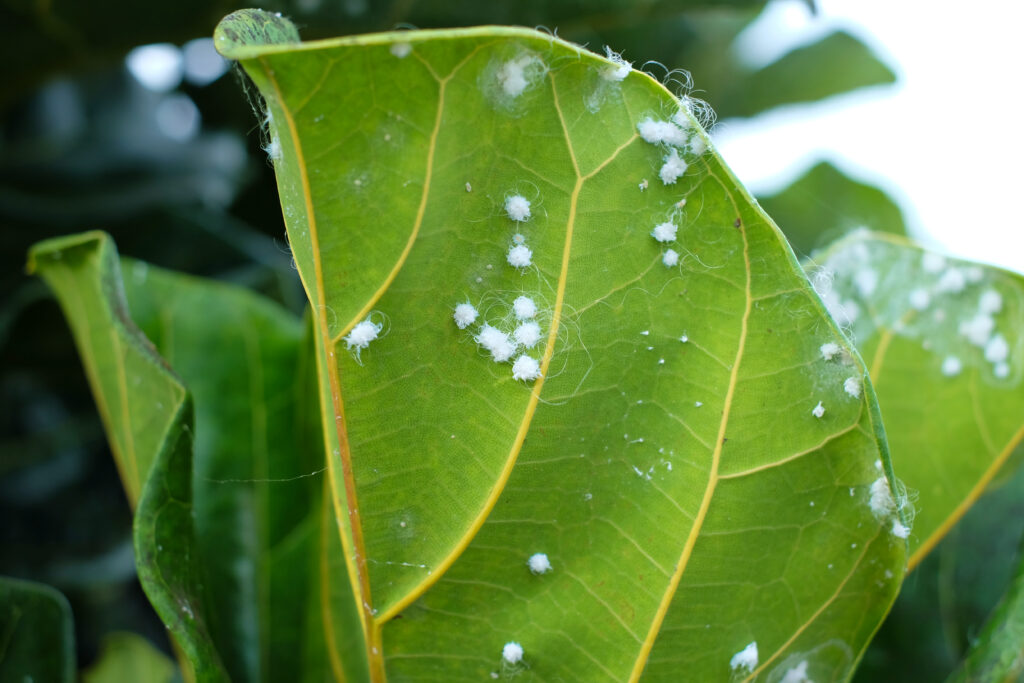
If you have noticed a cluster of white gnats on your plants, you may be dealing with a woolly aphid infestation or whiteflies.
©daguimagery/Shutterstock.com
Life Cycles
Whiteflies lay their eggs on the underside of leaves, and the eggs usually hatch within six to 10 days. When the eggs hatch, little nymphs crawl out. The nymphs are flat, oval in shape, and have a cottony substance all over. There are four developmental stages these nymphs go through, called instars.
After 18-22 days, a winged whitefly adult emerges out of the last nymphal stage. Adults, only about two to three millimeters long, can live for 30-40 days. At every stage of the process, the whitefly feeds by sucking out plant juices from the leaves.
The woolly aphid also has three basic stages of development: egg, nymph, and adult. As a nymph, woolly aphids also go through four instars, growing larger and larger before maturing into an adult woolly aphid. Adults range from one to three millimeters in size, depending on the species, and live for about 30 days.
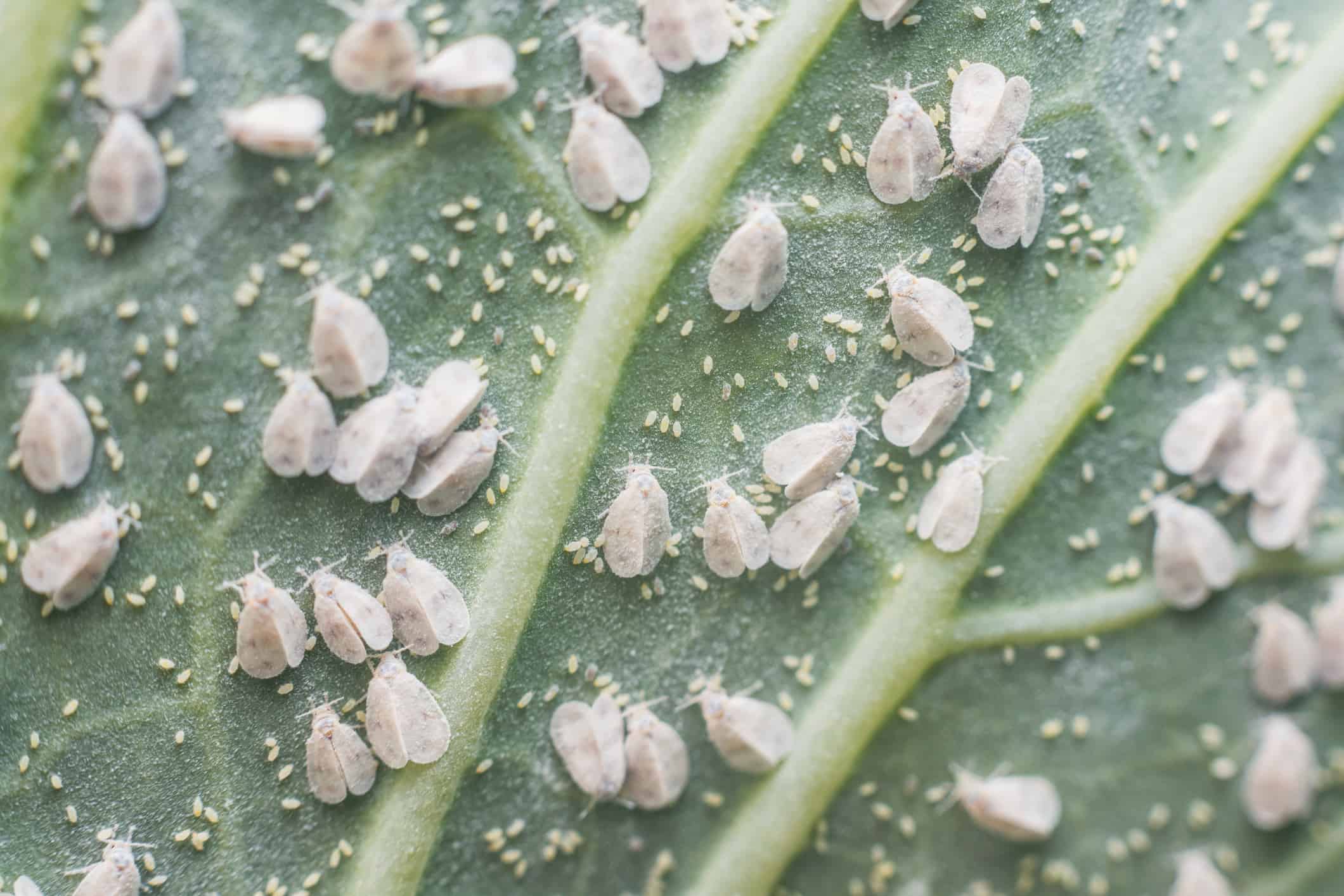
Whiteflies lay their eggs on the underside of leaves, and the eggs usually hatch within six to 10 days.
©iStock.com/Andrei310
Identification
Although you are most likely dealing with a whitefly or woolly aphid, there are many different species of each. As you know, each species is attracted to different types of host plants and have varying abilities when it comes to migrating host plants. It may benefit you to know what kind of whitefly or woolly aphid with which you’re about to do battle.
Two Main Whitefly Species
There are two main whitefly species to look for: the sweet potato whitefly and the greenhouse whitefly.
The sweet potato whitefly prefers many different herbaceous plants (plants without a woody stem above ground). But, the sweet potato whitefly can infest some woody plants as well. Some examples include cotton, tomatoes, peppers, crape myrtle, roses, and hibiscus.
You can identify this type of whitefly by looking at the nymphs in the fourth stage of development. They have no waxy filaments and not as much fringe around the oval-shaped body. As adults, sweet potato whiteflies have white wings and a yellow body, and their wings are slightly tilted to the surface.
The greenhouse whitefly also has a very broad taste in host plants, including most vegetables and herbaceous plants. Some examples include avocados, lantanas, redbuds, and more.
When looking for this type of whitefly, the nymphs in the fourth stage of development will have long, waxy filaments and some fringe. Adults have white wings and a yellowish tint to their bodies. They hold their wings straight out, giving them a triangle appearance.
To see a full chart of all the whitefly species and characteristics, you can view the identification table made by the University of California Agriculture and Natural Resources.
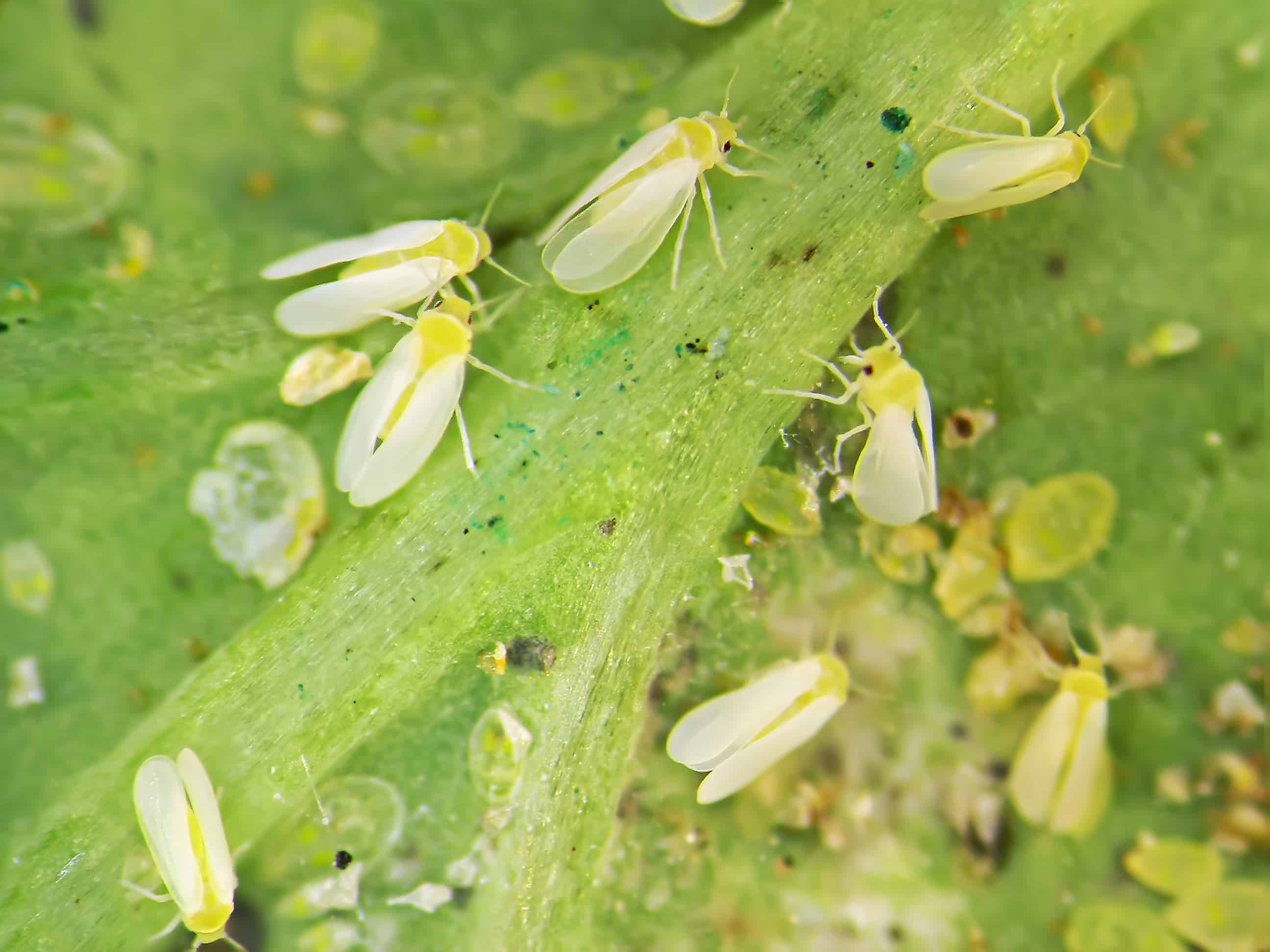
As adults, sweet potato whiteflies have white wings and a yellow body, and their wings are slightly tilted to the surface.
©Protasov AN/Shutterstock.com
Two Main Woolly Aphids Species
There are two main species to look for: the woolly apple aphid and the woolly elm aphid.
The woolly apple aphid gathers in groups on the bark, leaves, roots, and fruit of an apple tree. But, they are also partial to hawthorn and pear trees. When they feed, they tend to create gall (abnormal growths) on the bark, trunks, and branches. As adults, they are 1.2-2.5 millimeters long.
Woolly elm aphids range from two to three millimeters long as adults and mostly feed on elm trees and hawthorns. You find them on the bark, stems, roots, and leaves of the tree or plant. The most noted damage is the galling of the bark and branches and curling of the leaves.
You can look at the full identification table by the University of California Agriculture and Natural Resources.

Woolly aphids produce a white, waxy excrement that coats their bodies, giving them a woolly look.
©Tomas Vacek/Shutterstock.com
Damage Inflicted
The reason you want to get rid of both whiteflies and woolly aphids is because the way they feed damages your plants. When they use their needle-like mouth to puncture the leaves, whiteflies and woolly aphids suck the sap from the phloem. The phloem is the living tissue in plants that moves the sugar sucrose to the rest of the plant. Damage to the phloem can cause the leaves of your plant to turn yellow, seem dry, or break off your plant.
Whiteflies and woolly aphids also expel a sugary liquid called “honeydew.” That sticky substance can gum up your leaves and attract ants, which may scare away the natural predators of your pests.
Honeydew also causes a fungal disease called sooty mold, which grows specifically on honeydew. Though sooty mold won’t actively damage your plant, it can spread to the point where it blocks sunlight to your plant’s leaves. This can affect your fruit tree’s yield or make your flowers appear distressed. And, when you are trying to cultivate a gorgeous garden, this is frustrating.
There’s also a potential of woolly aphids spreading powdery mildew from host plant to host plant. Powdery mildew is a plant disease that, if left unchecked, can stunt growth and leave plants withered.
Prevention
Of course, the best management of these white gnat types is to prevent them from infesting in the first place. Reflective mulches can help with this. Reflective mulches work by reflecting ultraviolet light which mixes up an insect’s ability to find a host plant. Thus, it can prevent or at least delay the infestation of plants.
In other situations, making a friendly environment for natural enemies will help with pest control. The whitefly’s predators include lacewings, big-eyed bugs, minute pirate bugs, and no one’s personal favorite: the Asian multicolored lady beetle.
There is some overlap as far as enemies go for the woolly aphid. Lacewings, hoverflies, and ladybugs all consume woolly aphids and will reduce the aphids’ numbers. So, tolerating some of these predators will kill both the whiteflies and woolly aphids.
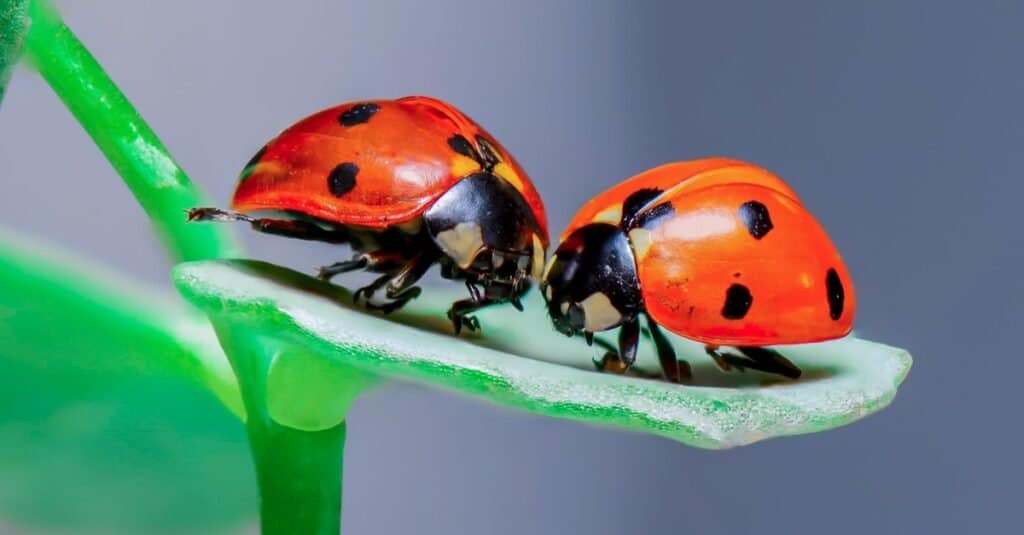
Making a friendly environment for natural enemies of whiteflies and woolly aphids, such as ladybugs, will help with pest control.
©Pixabay / CC0, Pexels – License
How to Get Rid of Whiteflies
If you notice an infestation, diligently remove leaves with eggs or nymphs. Or, hose down the leaves very well to wash away any eggs and nymphs lingering on the leaves. Yellow sticky traps can also be set up to reduce high levels of whiteflies. Another way to reduce populations is with insecticidal soaps or oils. Neem oil is a good option, as it’s a natural pesticide that is safe for pets and wildlife.
If you notice any plants with high, repetitive amounts of whiteflies, you should remove those plants. You can try a systemic insecticide as well. A systemic insecticide is absorbed by and transported through the plant, thus killing any insect feeding on it. However, this can also disturb friendly insects and pollinators.
How to Get Rid of Woolly Aphids
If you would like to use natural solutions for your woolly aphid problem, spraying down your plants with a strong stream of water is a good start. This will help dislodge any eggs laid under the leaves and nymphs clinging to the plant. Regular rinsing will keep the population down.
Neem oil is also a great choice, as well as a variety of natural insecticidal soaps. Most of the natural ones are made from a combination of pure soap (no dishwashing soaps that contain a degreaser or bleach) and oil (vegetable, peanut, corn, soybean, etc.). These soaps are preferable because they are animal and environmentally friendly while also eliminating small, soft-bodied insects like aphids.
For intense infestations of your plants, consider pruning and removing branches affected by the woolly aphids. Rarely are strong insecticides needed, but if the plant or tree is under stress, they can be used.
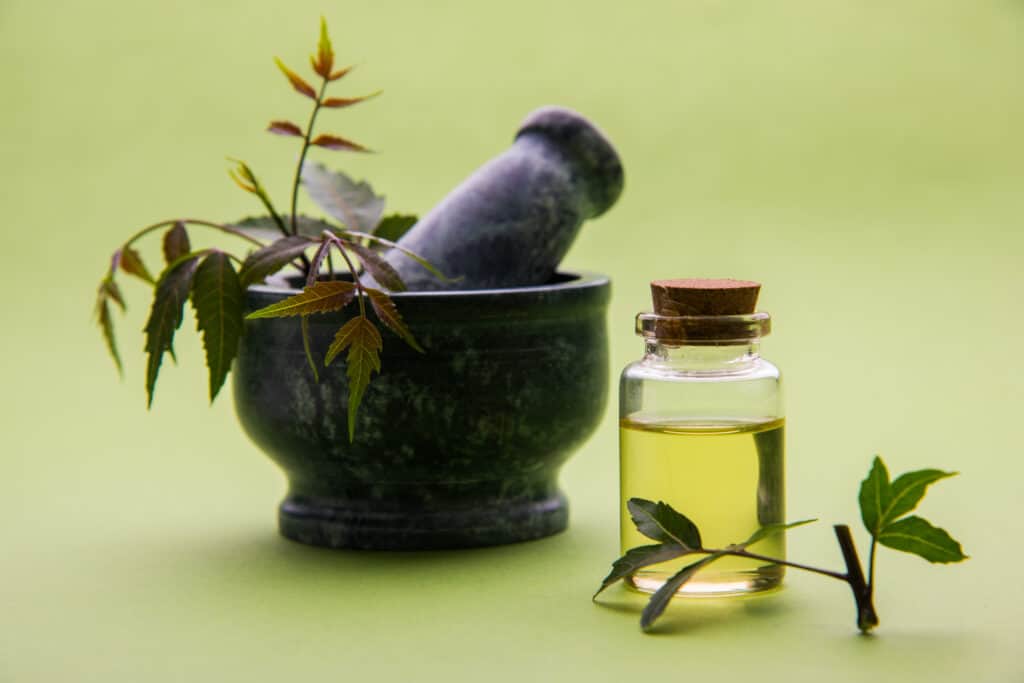
Neem oil is a good option for controlling both whiteflies and aphids, as it’s a natural pesticide that is safe for pets and wildlife.
©StockImageFactory.com/Shutterstock.com
Conclusion
Though seeing a cloud of “white gnats” around your plants is troubling, you have many options for the management and prevention of these whitefly and woolly aphid populations. With attentive work, you can protect your garden from these annoying pests.
Are Fungus Gnats White?
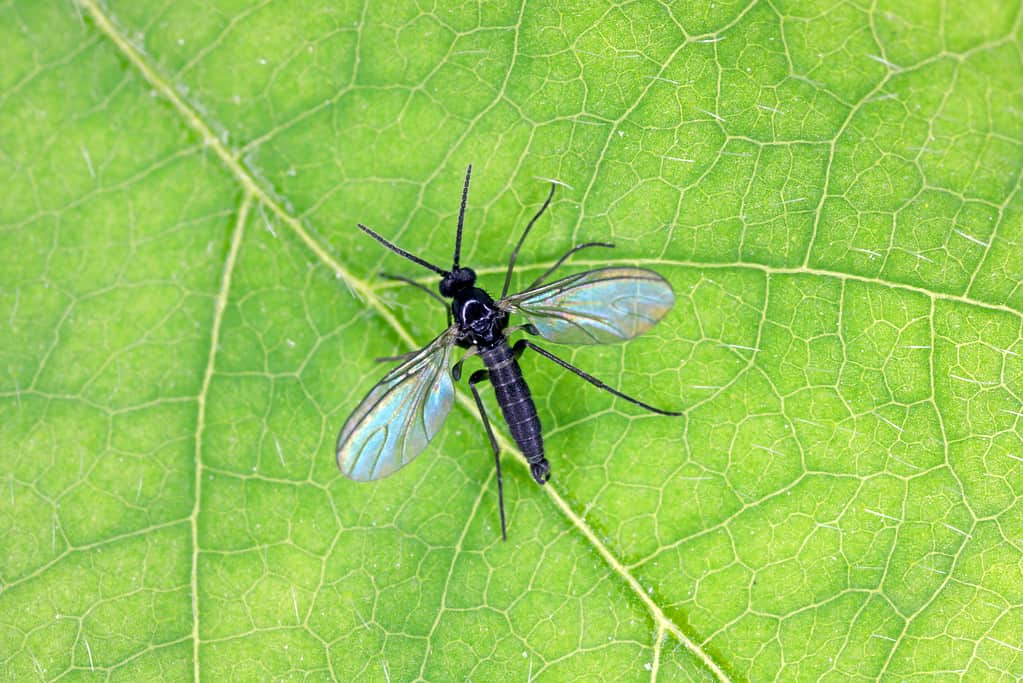
Dark-winged fungus gnats are often found inside homes.
©iStock.com/Tomas Klejdsz
There are certain tiny pests that can be confused for each other but they are typically in the same color family. You may automatically think any tiny little bug is a gnat but they may be some other culprit. As explained at the beginning of this post, gnat is a general term for many species of flying pests, but they do not come in the white variety. The only other little pests that are similar to fungus gnats are fruit flies as they are similar in size and color, but they are a completely separate species.
Fungus gnats are only found in shades ranging from dark gray to black (in comparison, fruit flies range from tan to black). These little gnats are a bit more similar to a mosquito in body type and have dangling legs, long bodies, and eyes that are so small, that they are not visible to the human eye.
The photo featured at the top of this post is © daguimagery/Shutterstock.com
Thank you for reading! Have some feedback for us? Contact the AZ Animals editorial team.






